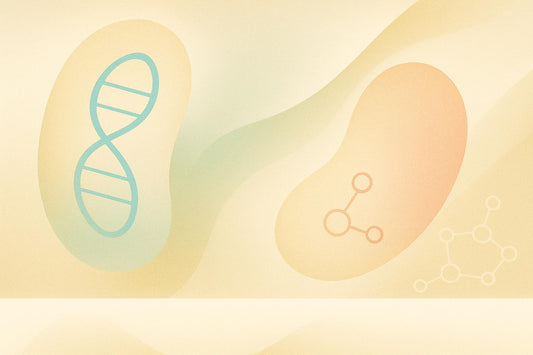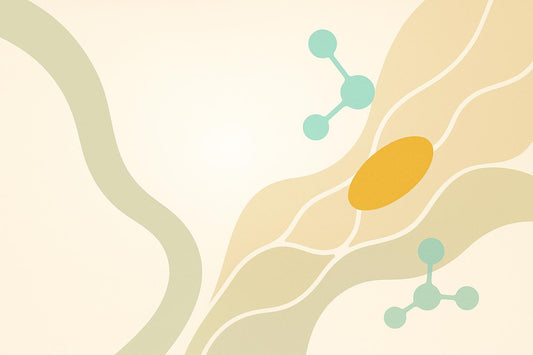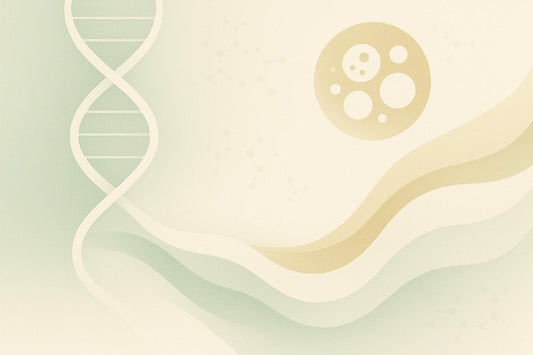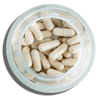Résultats de la recherche
-

Thioredoxin System in Brain Aging and Longevity
The thioredoxin system is a key cellular defense mechanism that protects the brain from aging and neurodegenerative diseases like Alzheimer’s and Parkinson’s. It works by maintaining redox balance, repairing damaged...
-

Oxidative Stress and Mitochondrial DNA Mutations
Oxidative stress harms your cells, and mitochondrial DNA (mtDNA) is especially at risk. Why does this matter? Damage to mtDNA can accelerate aging and lead to chronic diseases like cancer,...
-

Mitochondrial Dysfunction and Cellular Energy Decline
Mitochondria are your cells' energy factories, but when they malfunction, your body runs low on energy. This can lead to fatigue, aging, and diseases like Alzheimer’s, diabetes, and heart problems....
-

Transposable Elements in Aging Cells: Key Mechanisms
Aging cells struggle to control transposable elements (TEs), leading to DNA damage, inflammation, and faster aging. These mobile DNA sequences, which make up nearly 50% of the human genome, are...
-

Ultimate Guide to Recovery Nutrition for Aging Adults
Aging impacts recovery - but the right nutrition can help. As you get older, your body recovers more slowly, making it essential to focus on timing, quality, and consistency in...
-
How Can You Improve Your Gastrointestinal Health for Better Well-Being?
Gastrointestinal HealthOur gastrointestinal health plays a crucial role in our overall well-being. The gut, often referred to as our "second brain," influences everything from digestion to our immune system. When...
-

How to Keep Skin Looking Young: Effective Tips for Timeless Beauty
How to Keep Skin Looking Young We all want that youthful, radiant glow, but as the years go by, maintaining it can feel like an uphill battle. The good news...
-
What Are the Astaxanthin Benefits for Your Health?
Unveiling the Astaxanthin BenefitsAstaxanthin, often hailed as the "king of carotenoids," has been making waves in the health and wellness community. This powerful antioxidant, found in microalgae, salmon, and krill,...
-

How to Protect the Brain: Essential Tips for Optimal Brain Health and Injury Prevention
How to Protect the Brain Our brain is the command center of our body, responsible for everything from basic survival functions to our most complex thoughts. Protecting this vital organ...
-
What Is Homology-Directed Repair (HDR) and Why Is It Crucial for Genetic Research?
Homology-Directed Repair (HDR)In the world of genetic research, Homology-Directed Repair (HDR) stands out as a groundbreaking mechanism. HDR is a precise method that cells use to repair double-strand breaks in...
-

Mitochondrial DNA and Exercise: What Studies Show
Working out is one of the top ways to keep your cells fit and full of life as you get older. It makes mitochondrial DNA (mtDNA) work better, raises energy...
-

How Mitochondrial Dysfunction Fuels Inflammaging
Mitochondria play a crucial role in aging. When these "powerhouses" of the cell malfunction, they produce harmful molecules like reactive oxygen species (ROS) and release signals called DAMPs (damage-associated molecular...
-

Epigenetics of Fatty Acid Oxidation: Role of Diet
Your diet directly impacts how your body burns fat by influencing gene activity through epigenetics. Here's what you need to know: Epigenetics: This process controls which genes are turned on...
-

How Exercise Intensity Affects Thyroid Hormones
Did you know that your workout intensity directly impacts your thyroid hormones, which control your metabolism and energy levels? Here's what you need to know: Low-intensity exercise: Minimal impact on...
-

Prolactin and Sleep in Aging Adults
Struggling with sleep as you age? Prolactin, a hormone deeply tied to sleep regulation, may be a key factor. Here’s what you need to know: Prolactin levels naturally rise at...
-

Neuroinflammation and Cognitive Decline: Key Mechanisms
Neuroinflammation is a major driver of cognitive decline, linked to memory loss and slower mental processing. Chronic inflammation in the brain disrupts critical neural networks, damages neurons, and accelerates aging-related...
-

How 3D Bioprinting Extends Lifespan
Imagine a future where waiting for an organ transplant is a thing of the past. 3D bioprinting is transforming healthcare by creating functional organs and tissues using a patient’s own...
-

Curcumin and Blood-Brain Barrier: Key Mechanisms
Curcumin, the active compound in turmeric, could help protect your brain by supporting the blood-brain barrier (BBB) - a critical defense system that shields your brain from harmful substances. However,...
-

Chemiluminescence for ROS: How It Works
Chemiluminescence is a highly sensitive method used to detect reactive oxygen species (ROS), molecules that play a key role in aging and cellular damage. By producing light during chemical reactions,...
-

Peptide Nanocarriers for Longevity Compounds
Peptide nanocarriers are changing how anti-aging compounds like NMN and Resveratrol work in your body. These tiny delivery systems protect fragile compounds, improve absorption, and target aging cells directly. Here’s...
-

Curcumin vs. Inflammation: What Science Says
Curcumin is a natural compound found in turmeric that fights chronic inflammation, a key factor in aging and diseases like arthritis, diabetes, and heart disease. Here’s what you need to...
-

Ultimate Guide to Anthocyanins and Brain Longevity
Did you know that eating colorful fruits and vegetables can help protect your brain as you age? Anthocyanins, the compounds behind the red, blue, and purple hues in foods like...
-

How PFAS in Water Alters Gene Expression
PFAS, known as "forever chemicals", are found in everyday items like non-stick cookware and water-resistant clothing. These chemicals persist in the environment and can contaminate water supplies, interfering with gene...
-
What Are the Benefits of Liposome Advantage NMN for Anti-Aging?
Liposome Advantage NMNIn the world of wellness and anti-aging, NMN (Nicotinamide Mononucleotide) has garnered attention for its potential to boost energy and slow aging. But not all NMN supplements are...





















